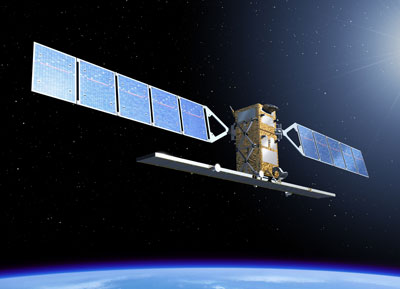ESA: the odd man outby Taylor Dinerman
|
| This puts ESA into the uncomfortable role of having to be a warfighting institution at the same time as a civil and scientific organization. |
As Aviation Week pointed out in its November 24th issue, “ESA’s entry into the security and defense realm reflects the lead role the European Union is now playing in defining space policy.” This comes as no surprise, as it has long been evident that the EU cannot have its own defense policy without a complementary military space policy. What has changed is that they are now completely open about it and that they are, so far, not willing to set up a separate European military space organization.
This may reflect the reluctance of some EU members to press full speed ahead with the militarization of the EU, but it may also be due to the traditional way that the EU’s leaders have camouflaged the progress they are making towards “an ever closer union”. In any case this puts ESA into the uncomfortable role of having to be a warfighting institution at the same time as a civil and scientific organization.
For some ESA members who are not EU members, such as Switzerland, Norway, and to some extent, Canada, special arrangements will be made. The dual-use nature of the military systems that the EU wants ESA to develop and operate will make these arrangements especially difficult to define. The lack of transparency that is likely to result from these deals will challenge even the sharpest observers to figure out what they actually mean. We may see a textbook example of what Henry Kissinger used to call “constructive ambiguity”.
The good news is that ESA and the EU are going ahead with the Global Monitoring for Environment and Security (GMES) project. It has been renamed “Kopernikus” after the man who exploded the idea of an Earth-centered universe. GMES will integrate a number of satellites that are already in orbit and some pre-existing ground facilities, such as the one at Torrejon, outside Madrid, with a new set of spacecraft. The first five satellites are the Sentinels, the first of which is planned for launch in 2011.
One important indication of whether Europe is serious or not about GMES will be how much are they willing to spend on unglamorous ground-based analysts and interpreters and their supporting systems. If all or most the new money is spent on satellites and not on training and support, then we’ll know if they truly intend to be more than just a symbolic player in the space based surveillance game.
Kopernikus will enhance the European contribution to the western world’s global surveillance capability. There is a undoubted need for more space-based, multi-mode/multi-sensor surveillance, and having more assets in space will certainly help with the ongoing war against terror and will also contribute to the free world’s ability to prevent or, if necessary, to win future conflicts. However, the question is, why should this be ESA’s job?
The two new dual-use programs that ESA is now on track to begin are a data relay system and a space situational awareness system. As is often the case there is probably a bit—or more than a bit—of envy of the US involved here. The US has the TDRS system and is committed to building replacements for it, and the US complex of space situational awareness systems is not only by far the best in the world, but is going to be upgraded over the next decade with new in-space assets and improvements to the ground-based optical and radar systems.
TDRS was originally a classic dual-use system, just as was the Space Shuttle. Some claim that the bulk of the bandwidth is used by the NRO’s high-powered radar satellites, known as Lacrosse. However, it is also believed that the NRO has been launching its own dedicated data relay satellites. In any case, there are no public plans for Europe to build anything nearly as powerful as Lacrosse.
| It is curious that the EU, which is normally ready to create new institutions at the drop of a hat, has not seen fit to create one for military or security space. |
So now Europe, in the name of its sacred “independence”, is going to build a similar system that probably be as costly and as delayed as Galileo. This should be strictly something between the EU and its taxpayers: ESA’s partners and members have a right to ask some pointed questions about the uses their instruments and technology will be put to.
If the Swiss, for example, were to provide a hyperspectral sensor for a Kopernikus satellite and that sensor was used to guide a French air strike at a terrorist base in Chad, would that be a violation of Swiss neutrality? It’s not as if they were simply selling weapons over which they would have no control once they are delivered; Switzerland is an ESA member expects a share of the contracts under the juste retour principle.
It is curious that the EU, which is normally ready to create new institutions at the drop of a hat, has not seen fit to create one for military or security space. ESA’s new role as a openly militarized space agency may make it difficult, although not impossible, for other international partners, particularly NASA, to cooperate with it.
All of the world’s space agencies have at least some dual-use purpose. They all contribute to their political masters’ purposes, and that naturally includes security. However, keeping the roles as separate as possible has been a Western tradition, at least since the Eisenhower administration. For ESA to break this longstanding consensus may have unforeseen effects that the EU may not be comfortable with.
